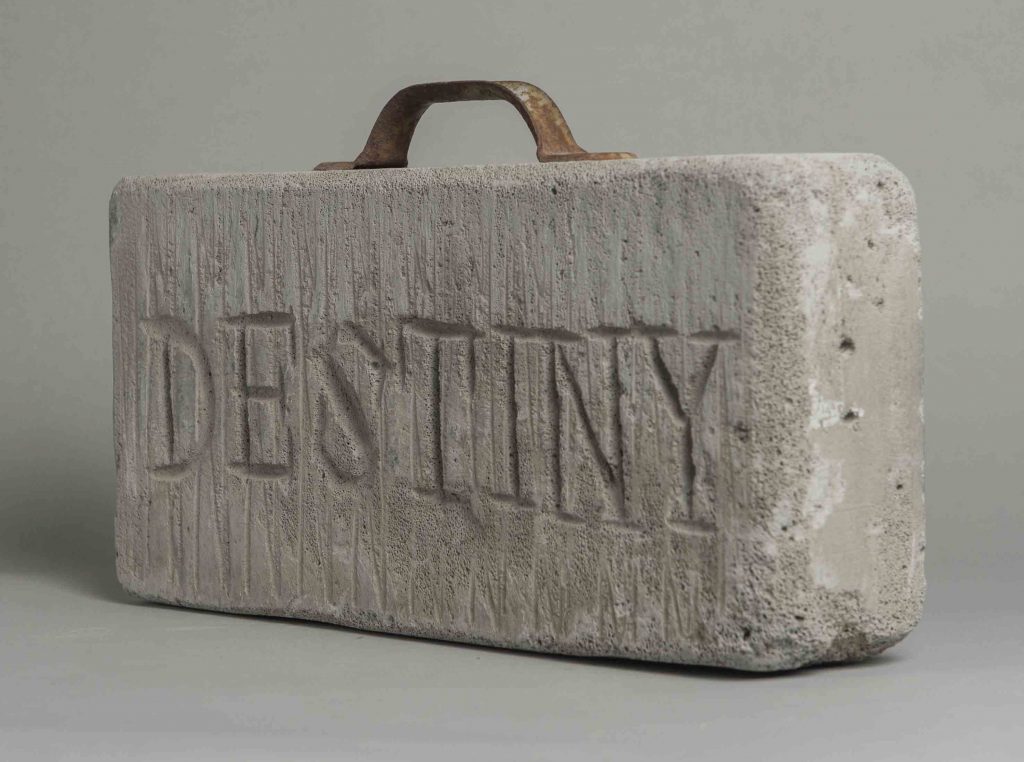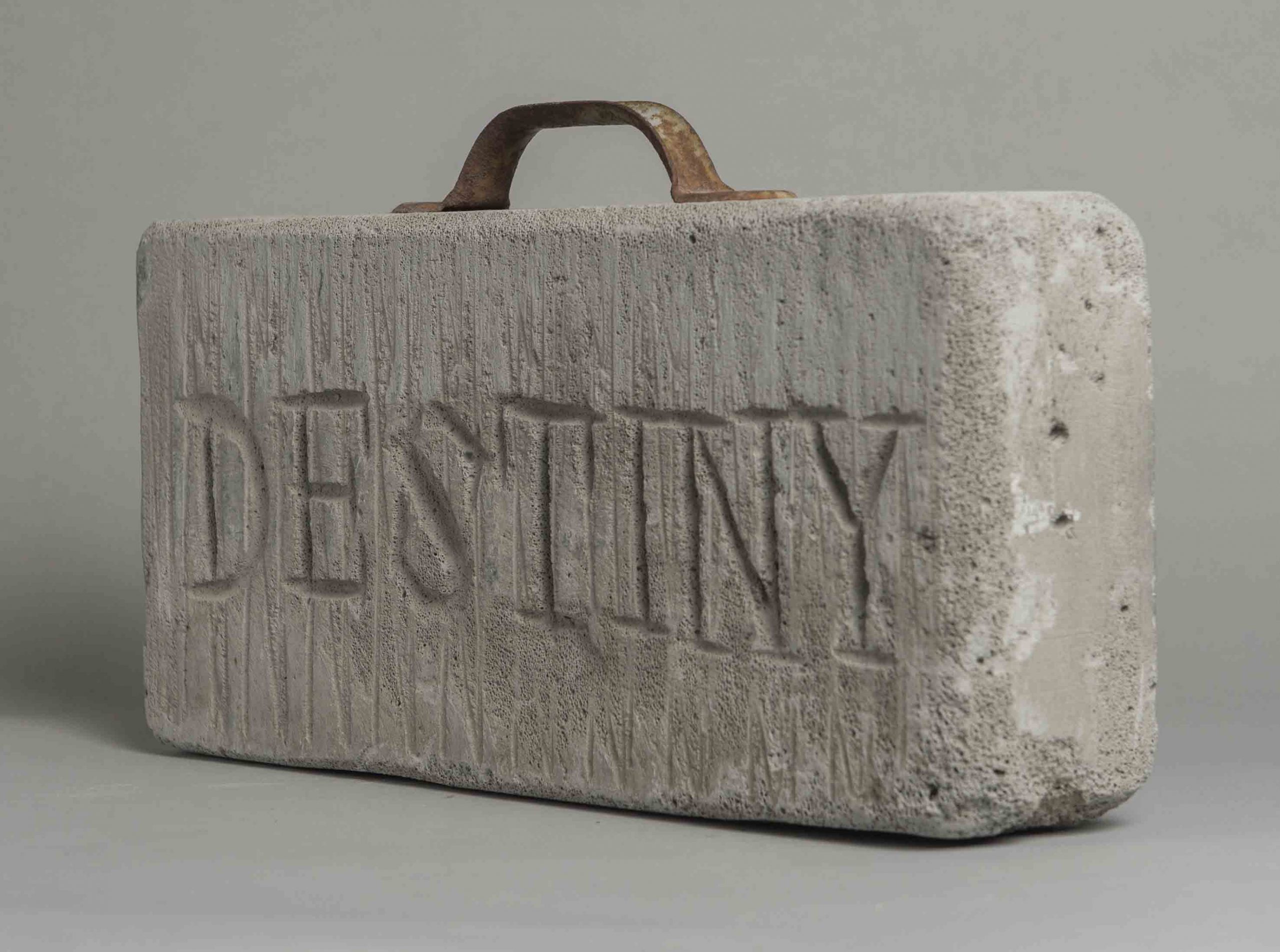
I love how the artist George Wyllie’s Stone of Destiny wittily captures essences of the story of this contested national icon: its portability (which enabled repeated movement) and propensity to be copied.
This concrete and aluminium artwork is on temporary display in the Pathfoot Building, my workplace and the home of the University of Stirling’s main Art Collection. Here from 1 April to end August 2023 (see how to visit), its presence nicely coincides with the announcement of two research awards from the British Academy / Leverhulme Trust (see Acknowledgements).
My research on this highly mobile Stone as it shortly goes on the move is intended, among other things, to broaden the debate about the benefits of taking an approach to the study of objects that focuses on the metaphor of ‘itinerary’. The symbolic and metaphoric power of such objects is bound up with their ability to be moved.
This artwork resembles a suitcase; by contrast, the medieval Stone is designed to be sat on, with iron handles attached to the narrow ends of the sandstone block. Scholars do not agree whether these handles were used to move the Stone or chain it down.
Different communities claim the Stone and its many copies. Used at Scone Abbey in the inauguration of Scottish kings, in 1296 English King Edward 1 left Scotland with the Stone. Famously, in 1950 four Scots broke into Westminster Abbey, removed it from the Coronation Chair enshrining it since 1297–1300, and ‘repatriated’ it. Returned to Westminster in 1951 and used in Elizabeth II’s 1953 coronation, in 1996 it passed to the care of the Commissioners for the Safeguarding of the Regalia. The new king’s coronation in London and the 2024 relocation of the Stone from Edinburgh Castle to Perth Museum offer an unparalleled opportunity to explore the Stone’s contemporary authenticity and social value as it continues its odyssey.
In journalist Neil Ascherson’s analysis, the Scots were ‘deprived of a grievance for a stone’ when the Conservative UK government staged this return of the Stone (Ascherson 2002, 24; 2003).
George Wyllie is a renowned Scottish artist trained as an engineer with the Post Office before serving in the Royal Navy. He was a Customs and Excise Officer for thirty years before becoming a full-time artist in his late fifties. He burst onto the contemporary art scene during the 1980s and ruffled feathers through his playfully serious art. In keeping with this, Wyllie made a limited edition of portable Stones so all claimants might have their own.
A workshop on the Stone is planned while Wyllie’s artwork is at the University, details to be confirmed.
I must thank Dr Rhona Ramsay for introducing me to the artwork and our fantastic team at the Art Collection (Sarah Bromage and Emma McCombie), the Scottish Political Archive (Rosie Al-Mulla) and The Stirling Smith (Nicola Wilson) for making this exhibition possible. It coincides with the student-designed exhibition ‘Scots Independent: Holding Westminster to account since 1926’ which is on at the University Library.
Sally Foster
Postscript: learn more in my later blog on George Wyllie’s panoply of artwork associated in some way with the Stone of Destiny
